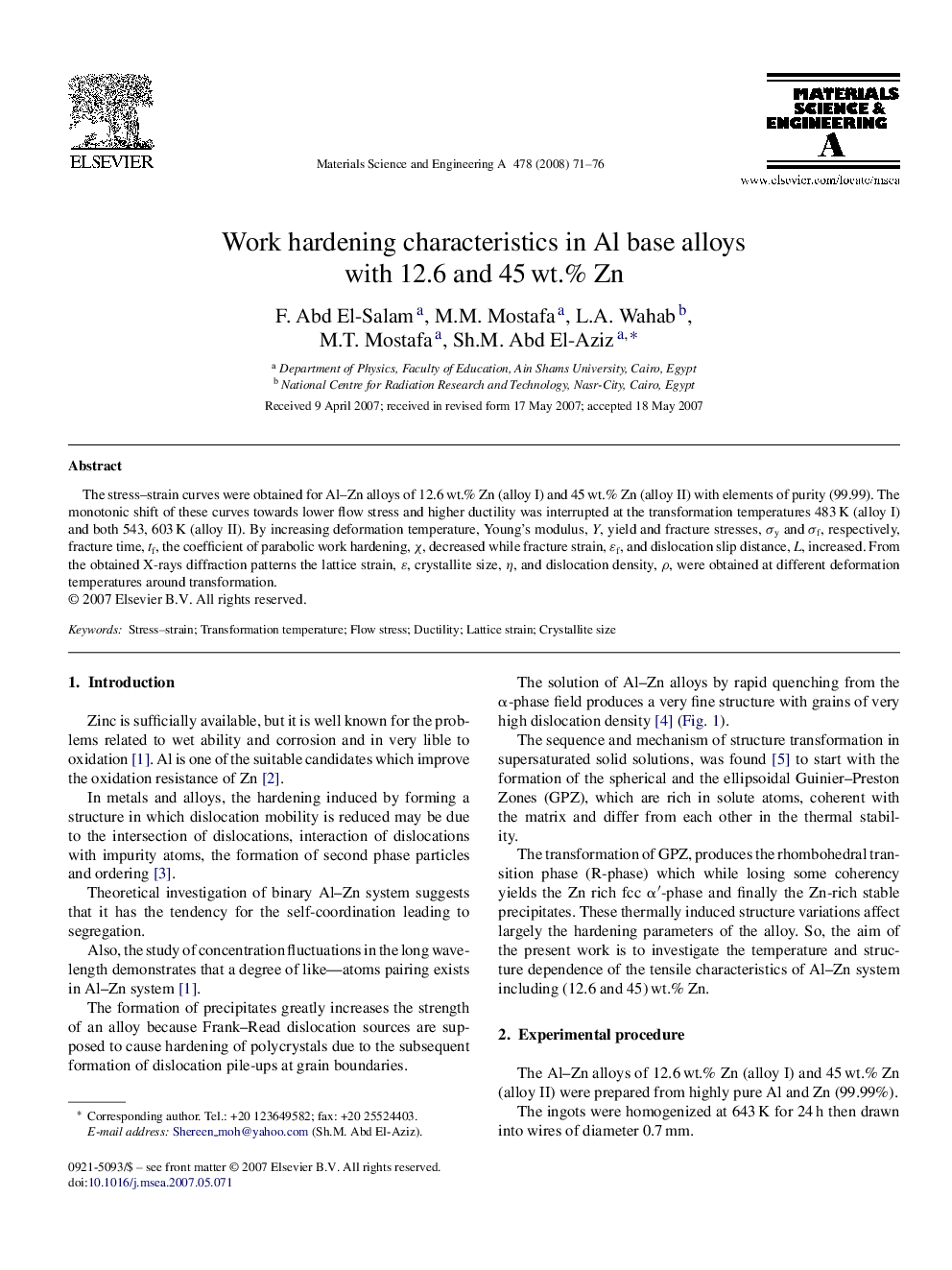| Article ID | Journal | Published Year | Pages | File Type |
|---|---|---|---|---|
| 1583167 | Materials Science and Engineering: A | 2008 | 6 Pages |
The stress–strain curves were obtained for Al–Zn alloys of 12.6 wt.% Zn (alloy I) and 45 wt.% Zn (alloy II) with elements of purity (99.99). The monotonic shift of these curves towards lower flow stress and higher ductility was interrupted at the transformation temperatures 483 K (alloy I) and both 543, 603 K (alloy II). By increasing deformation temperature, Young's modulus, Y, yield and fracture stresses, σy and σf, respectively, fracture time, tf, the coefficient of parabolic work hardening, χ, decreased while fracture strain, ɛf, and dislocation slip distance, L, increased. From the obtained X-rays diffraction patterns the lattice strain, ɛ, crystallite size, η, and dislocation density, ρ, were obtained at different deformation temperatures around transformation.
